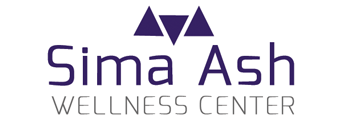You have received the news that your child has autism, is on the spectrum or is 'at risk' for autism. There are many different treatment options available for your child, but how can you measure if they are having an impact?
Bernard Rimland and Dr. Stephen Edelson developed the Autism Treatment Evaluation Checklist (ATEC) with the intent to assist parents, physicians and researchers evaluate virtually any treatment for autism - at no charge. The scores are weighted according to the response and the corresponding subscale.
The ATEC evaluates 77 items, such as whether the child knows his or her name, makes eye contact with others or has symptoms such as bed-wetting, diarrhea, constipation and so on. These are divided into four sub-groups that measure the child in terms of:
- Speech / Language / Communication (14 items)
- Sociability (20 items)
- Sensory / Cognitive Awareness (18 items)
- Health / Physical / Behavior (25 items)
ATEC scores range from 0 to 180. The lower the score, the better. If a child scores zero or close to zero, that child can no longer be distinguished from non-autistic children and thus can be considered fully recovered. The important benchmarks in scoring are as follows:
- ATEC < 30. This level places the child in the top 10 percentile. A child with a score of less than 30 – or, better still, less than 20 – would have some ability to conduct normal, two-way conversations, and more or less behave normally. Such children have high chances of leading normal lives as independent individuals.
- ATEC < 50. This places the child in the 30th percentile level. The child has good chances of being semi-independent. More importantly, he or she will not likely need to be placed in an institution. For many parents of autistic children, being able to achieve improvement up to this level is already considered very significant.
- ATEC > 104. Even though the maximum score is 180, any person with a score of more than 104 would already be in the 90th percentile and be considered very severely autistic.
The range of scores, and their percentile levels are shown in the table below:
| Percentile | ATEC score |
| mild autism 0 – 9 |
0 – 30 |
| 10 – 19 | 31 – 41 |
| 20 – 29 | 42 – 50 |
| 30 – 39 | 51 – 57 |
| 40 – 49 | 58 – 64 |
| 50 – 59 | 65 – 71 |
| 60 – 69 | 72 – 79 |
| 70 – 79 | 80 – 89 |
| 80 – 89 | 90 – 103 |
| 90 – 100 severe autism |
104 – 180 |
To take the test as a benchmark or to monitor your child's treatment, please visit the ATEC Online Tool.
Sima Ash, Director of Healing 4 Soul, combines her expertise in whole-body health and medical research to educate everyone about the newest developments in detoxification and chronic diseases. To schedule your consultation call our office at (800) 669-0358.
WE ARE HERE TO EDUCATE, NOT MEDICATE





